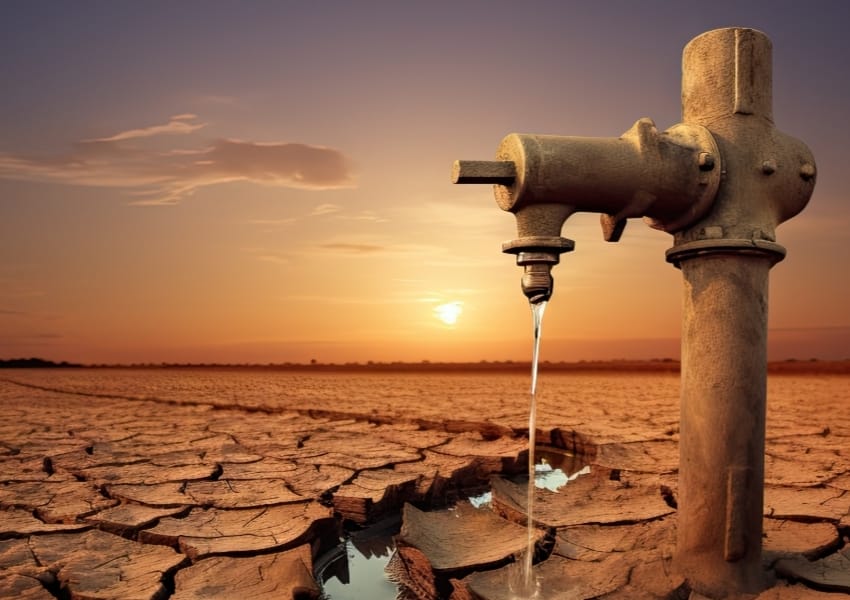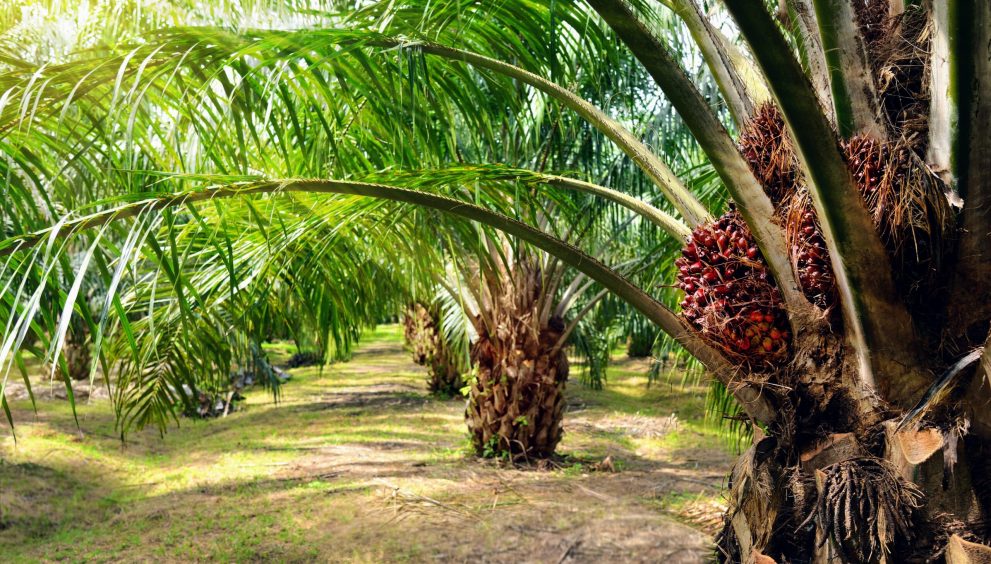Balancing Economic Development And Environmental Conservation In Oil Palm
India’s palm oil push has the potential to yield tremendous benefits for the country’s economy, its farmers, and its bid for self-sufficiency. What’s more, it won’t come at the cost of the country’s sustainability goals either. The country is aiming to increase the area under oil palm cultivation to 10 lakh hectares by 2025-26 and then to 16.7 lakh hectares by 2029-30 with a particular focus on the North East, as part of its National Mission on Edible Oils – Oil Palm.[1]
While palm oil is widely seen as ecologically damaging in popular perception and not without reason, India is pursuing a responsible path, aiming to strike a balance between its economic needs and environmental conservation.
Striking that balance is crucial because India needs palm oil.
Making India Food Secure
Edible oil is India’s largest food import. India’s edible oil import bill soared 34 per cent to Rs. 1.57 trillion in the oil year ending October 2022, according to industry body The Solvent Extractors’ Association of India. Of the roughly 24 million tonnes of edible oil consumed in the country, 15 million tonnes is imported. While palm oil accounts for 70 per cent of that, the increase in oil import bill nonetheless underlines the growing demand for edible oil in India.
With the country’s population only set to grow and rising disposable incomes altering the makeup of the consumption basket, the import burden of edible oils is set to rise. And with palm oil present in everything from ketchup to shampoos, it is only set to get heavier. That’s unless we can become self-sufficient. And it is herein that boosting domestic palm oil production holds the key to self-sufficiency.
Rapeseed, soya, rice bran, sunflower, groundnut, mustard, cotton – India’s farmlands grow a variety of oil-producing crops. But their productivity pales in comparison to the palm oil crop’s. The various oil crops produce between 300-500 kilograms of oil per hectare whereas an oil palm plantation can produce as many as four tonnes of oil per hectare. Palm oil thus has a key role to play in making India self-sufficient.
Boosting Farm Prosperity
At the same time, palm oil can significantly boost farmer incomes as cultivation of oil palms is more remunerative and less resource intensive than say crops like rice. Take Andhra Pradesh, for instance. Widely hailed as a palm oil success story, some farmers in the state have seen their incomes as much as triple since making the switch to palm oil.
Additionally, the recommended spacing between two oil palm plants enables Intercropping. A common practice on palm oil plantations in which farmers grow a variety of crops like cocoa, red ginger, bush pepper, and banana, it is good for soil health, increases biodiversity and more so diversifies a farmer’s revenue stream. Acting as a further income boost, especially during the initial four-year non-productive gestation period of oil palm cultivation, intercropping also saves land because when alternative cash crops can be planted between oil palm trees, adjoining plantations don’t have to be cleared.
But the prosperity-boosting benefits of the oil palm crop have never been in question. Which brings me to the most contentious point surrounding India’s palm oil push – sustainability.
Solving the sustainability conundrum
Oil palm cultivation has long been associated with widespread deforestation and ecological destruction. That was certainly the case once, but not anymore. Palm oil cultivation today can be sustainable.
Plantations, for instance, can be established on land that has already been degraded rather than on land that needs to be deforested. This is the approach India is taking: – a majority of oil palm cultivation is taking place on virgin land. As a result, no forests are being razed to set up plantations.
On the contrary, oil plantations are in fact adding to the country’s green cover. When carried out responsibly, oil palm cultivation can actually further India’s carbon neutrality goals as plantations act as carbon sinks sequestering carbon dioxide from the atmosphere. At the same time, careful land-use planning can reduce the pressure on high biodiversity landscapes.
Thus, in our quest to reduce the country’s import bill for edible oil, it’s all about striking a balance between our economic needs and sustainability goals. And India is doing a good job of walking that line with its plans for Oil Palm plantations.
The author is the Managing Director of Godrej Agrovet Ltd.
Disclaimer: The views expressed in the article above are those of the authors’ and do not necessarily represent or reflect the views of this publishing house. Unless otherwise noted, the author is writing in his/her personal capacity. They are not intended and should not be thought to represent official ideas, attitudes, or policies of any agency or institution.
India’s palm oil push has the potential to yield tremendous benefits for the country’s economy, its farmers, and its bid for self-sufficiency. What’s more, it won’t come at the cost of the country’s sustainability goals either. The country is aiming to increase the area under oil palm cultivation to 10 lakh hectares by 2025-26 and then to 16.7 lakh hectares by 2029-30 with a particular focus on the North East, as part of its National Mission on Edible Oils – Oil Palm.[1]
While palm oil is widely seen as ecologically damaging in popular perception and not without reason, India is pursuing a responsible path, aiming to strike a balance between its economic needs and environmental conservation.
Striking that balance is crucial because India needs palm oil.
Making India Food Secure
Edible oil is India’s largest food import. India’s edible oil import bill soared 34 per cent to Rs. 1.57 trillion in the oil year ending October 2022, according to industry body The Solvent Extractors’ Association of India. Of the roughly 24 million tonnes of edible oil consumed in the country, 15 million tonnes is imported. While palm oil accounts for 70 per cent of that, the increase in oil import bill nonetheless underlines the growing demand for edible oil in India.
With the country’s population only set to grow and rising disposable incomes altering the makeup of the consumption basket, the import burden of edible oils is set to rise. And with palm oil present in everything from ketchup to shampoos, it is only set to get heavier. That’s unless we can become self-sufficient. And it is herein that boosting domestic palm oil production holds the key to self-sufficiency.
Rapeseed, soya, rice bran, sunflower, groundnut, mustard, cotton – India’s farmlands grow a variety of oil-producing crops. But their productivity pales in comparison to the palm oil crop’s. The various oil crops produce between 300-500 kilograms of oil per hectare whereas an oil palm plantation can produce as many as four tonnes of oil per hectare. Palm oil thus has a key role to play in making India self-sufficient.
Boosting Farm Prosperity
At the same time, palm oil can significantly boost farmer incomes as cultivation of oil palms is more remunerative and less resource intensive than say crops like rice. Take Andhra Pradesh, for instance. Widely hailed as a palm oil success story, some farmers in the state have seen their incomes as much as triple since making the switch to palm oil.
Additionally, the recommended spacing between two oil palm plants enables Intercropping. A common practice on palm oil plantations in which farmers grow a variety of crops like cocoa, red ginger, bush pepper, and banana, it is good for soil health, increases biodiversity and more so diversifies a farmer’s revenue stream. Acting as a further income boost, especially during the initial four-year non-productive gestation period of oil palm cultivation, intercropping also saves land because when alternative cash crops can be planted between oil palm trees, adjoining plantations don’t have to be cleared.
But the prosperity-boosting benefits of the oil palm crop have never been in question. Which brings me to the most contentious point surrounding India’s palm oil push – sustainability.
Solving the sustainability conundrum
Oil palm cultivation has long been associated with widespread deforestation and ecological destruction. That was certainly the case once, but not anymore. Palm oil cultivation today can be sustainable.
Plantations, for instance, can be established on land that has already been degraded rather than on land that needs to be deforested. This is the approach India is taking: – a majority of oil palm cultivation is taking place on virgin land. As a result, no forests are being razed to set up plantations.
On the contrary, oil plantations are in fact adding to the country’s green cover. When carried out responsibly, oil palm cultivation can actually further India’s carbon neutrality goals as plantations act as carbon sinks sequestering carbon dioxide from the atmosphere. At the same time, careful land-use planning can reduce the pressure on high biodiversity landscapes.

A thirsty crop, oil palm, is also often blamed for increasing water scarcity. But situating palm oil plantations in areas that get heavy rainfall, like the North East, and also adopting resource-responsible methods like drip irrigation, means an oil palm plantation need not necessarily deplete the water table. Thus, in our quest to reduce the country’s import bill for edible oil, it’s all about striking a balance between our economic needs and sustainability goals. And India is doing a good job of walking that line with its plans for Oil Palm plantations.
The author is the Managing Director of Godrej Agrovet Ltd.
Disclaimer: The views expressed in the article above are those of the authors’ and do not necessarily represent or reflect the views of this publishing house. Unless otherwise noted, the author is writing in his/her personal capacity. They are not intended and should not be thought to represent official ideas, attitudes, or policies of any agency or institution.






























































































































































































































































































































































































































































































































































































































































































































































































































































































































































































































































































































































































